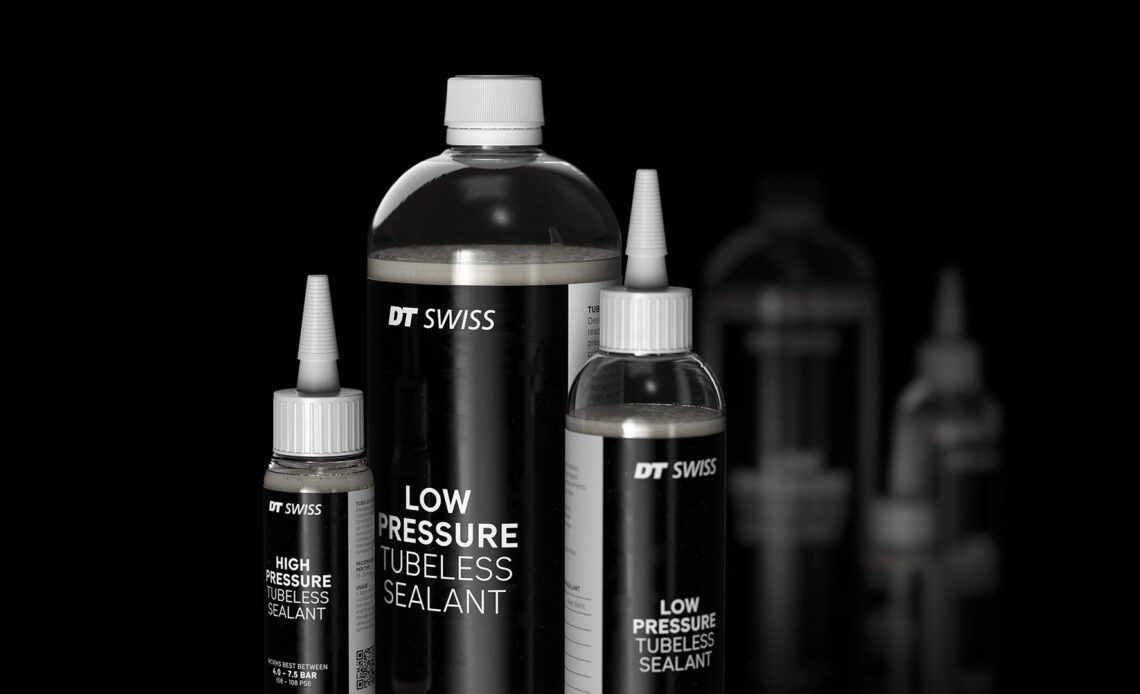It is no secret that tubeless tires have been a tough sell for the road crowd. While mountain biker and many gravel riders were quick to accept, even embrace the technology, early road tubeless options definitely had their … setbacks. The tides are turning on that but, even as many pro teams ditch tubes and tubs for tubeless, a solid percentage of road riders are still not sold on the idea.
DT Swiss wants to change that with its new pressure-specific tubeless sealant. The idea sounds like some combination of April Fool’s joke and tech breakthrough. Sealant should work at any pressure, right? Well, it doesn’t always. And some brands already offer mountain bikers numerous variants on the basic formulas. Race sealant, standard sealant, glow-in-the-dark sealant (also not a joke, apparently).
DT Swiss tubeless sealant
DT Swiss splits its sealant into two categories. Low Pressure (up to 4.5 bar, or 65 psi) or High Pressure (4-7.5bar, or 58-108 psi). Since the recommended pressure range for the Low Pressure formula exceeds the max pressure on many gravel tire-rim combos, the majority of off-road (mtb, gravel, etc.) set-ups will be best served by the Low Pressure formula.
What does DT Swiss change to make its tubeless sealant pressure-specific enough that it works better on the road? Well, the brand’s not too specific about that. The High Pressure sealant supposedly contains “thicker sealing particles” while the Low Pressure sealant “does not contain ammonium or latex.”
The High Pressure sealant claims to immediately fix cuts up to 3 mm, while the Low Pressure will seal holes up to 6mm. DT Swiss doesn’t give a list of ingredients, though that’s not surprising, or really say much more about how the sealant will work.
The sealant is also not cheap. DT Swiss says prices start at USD 17.60 for a 60ml bottle of High Pressure sealant, but it also recommends 60ml of sealant per tire. The Low Pressure sealant is more reasonable, at USD 20.40 for 240 ml or 62.70 for a 1 L bottle.
That cost could be worth it, if DT Swiss has found a way to significantly improve how well quickly tubeless tires can seal a puncture on the road. We haven’t had the chance to test either formula yet but, if you’re already invested in a tubeless road set-up that just won’t hold air, it could be worth a try.
Click Here to Read the Full Original Article at Canadian Cycling Magazine…

